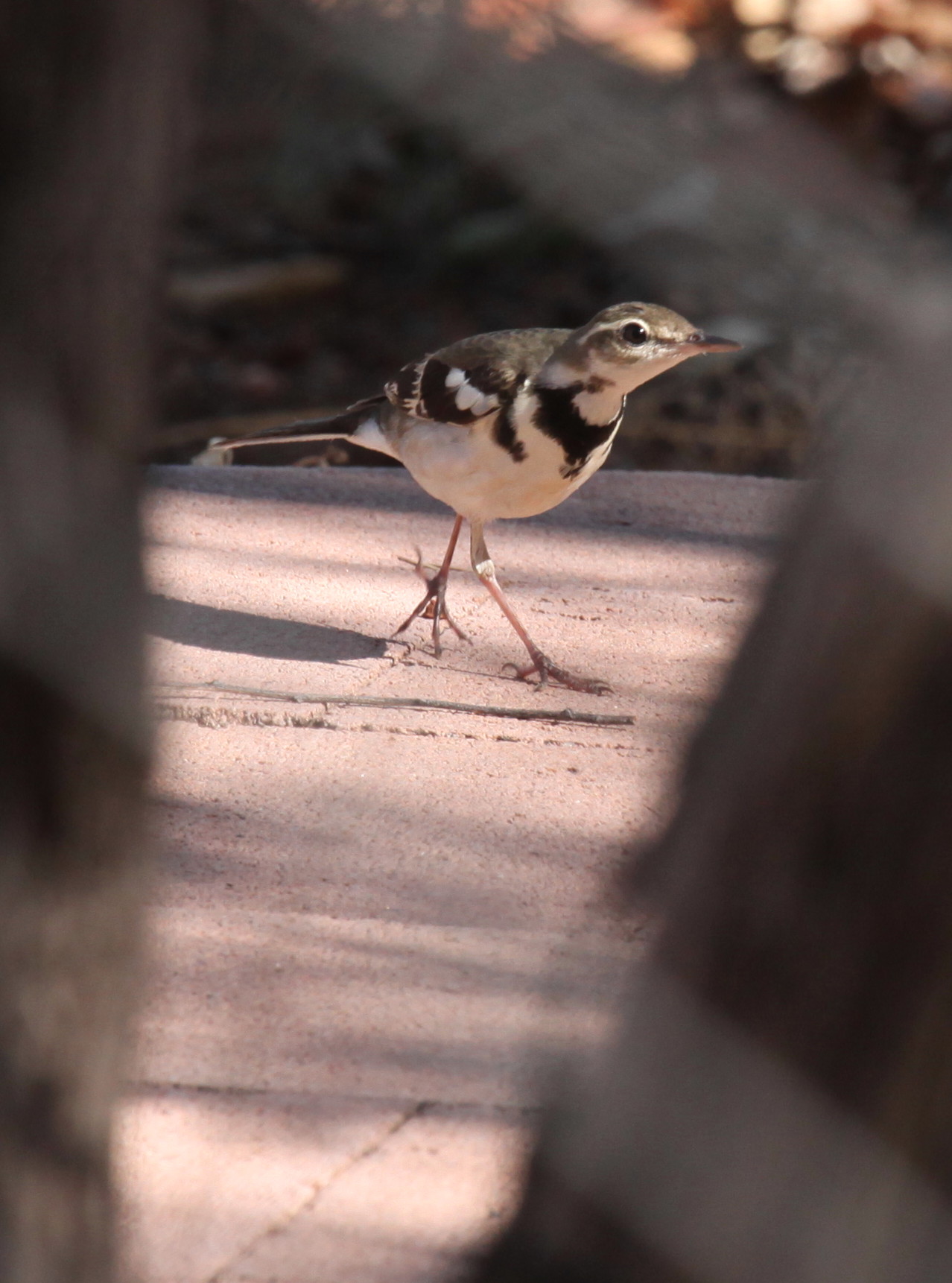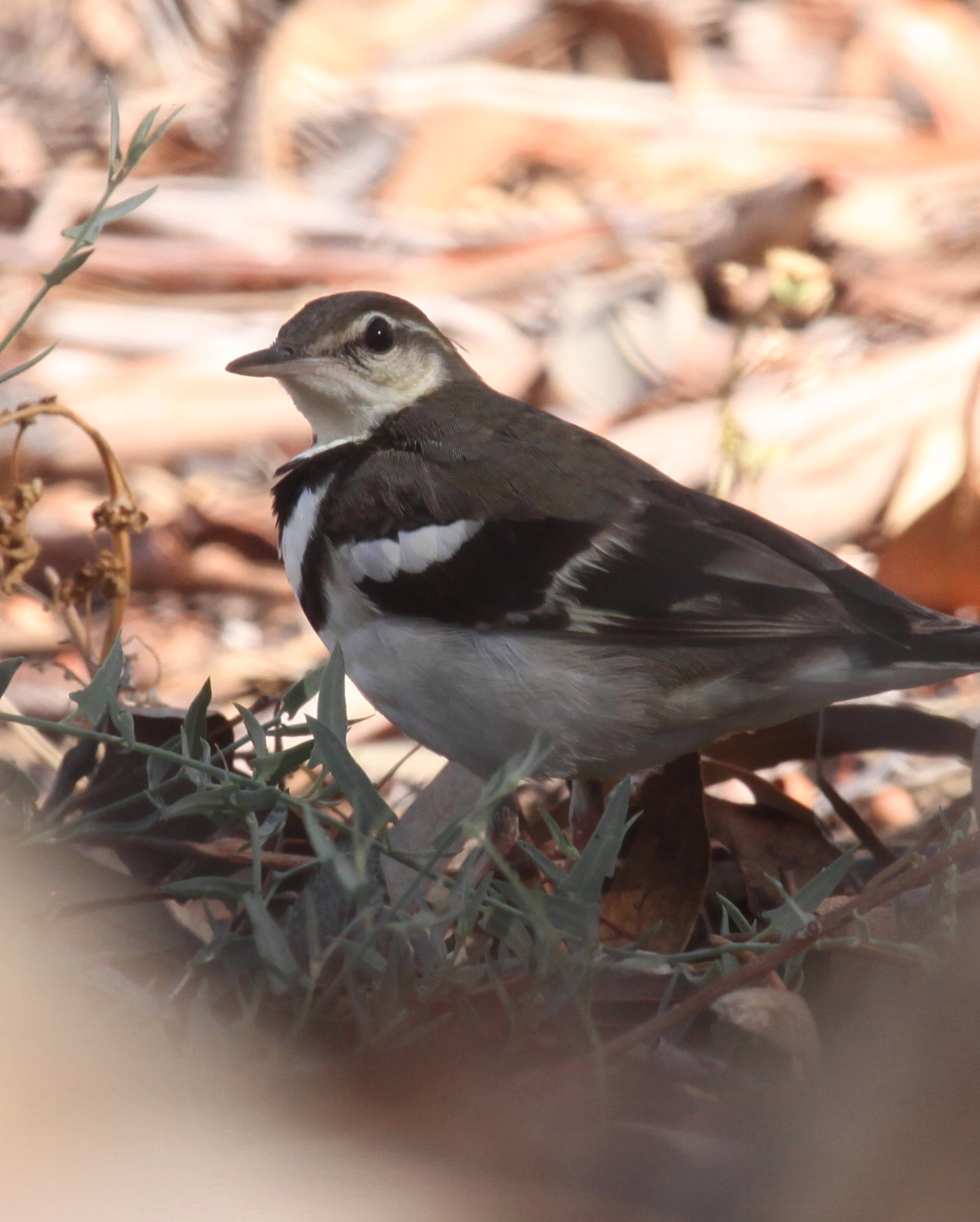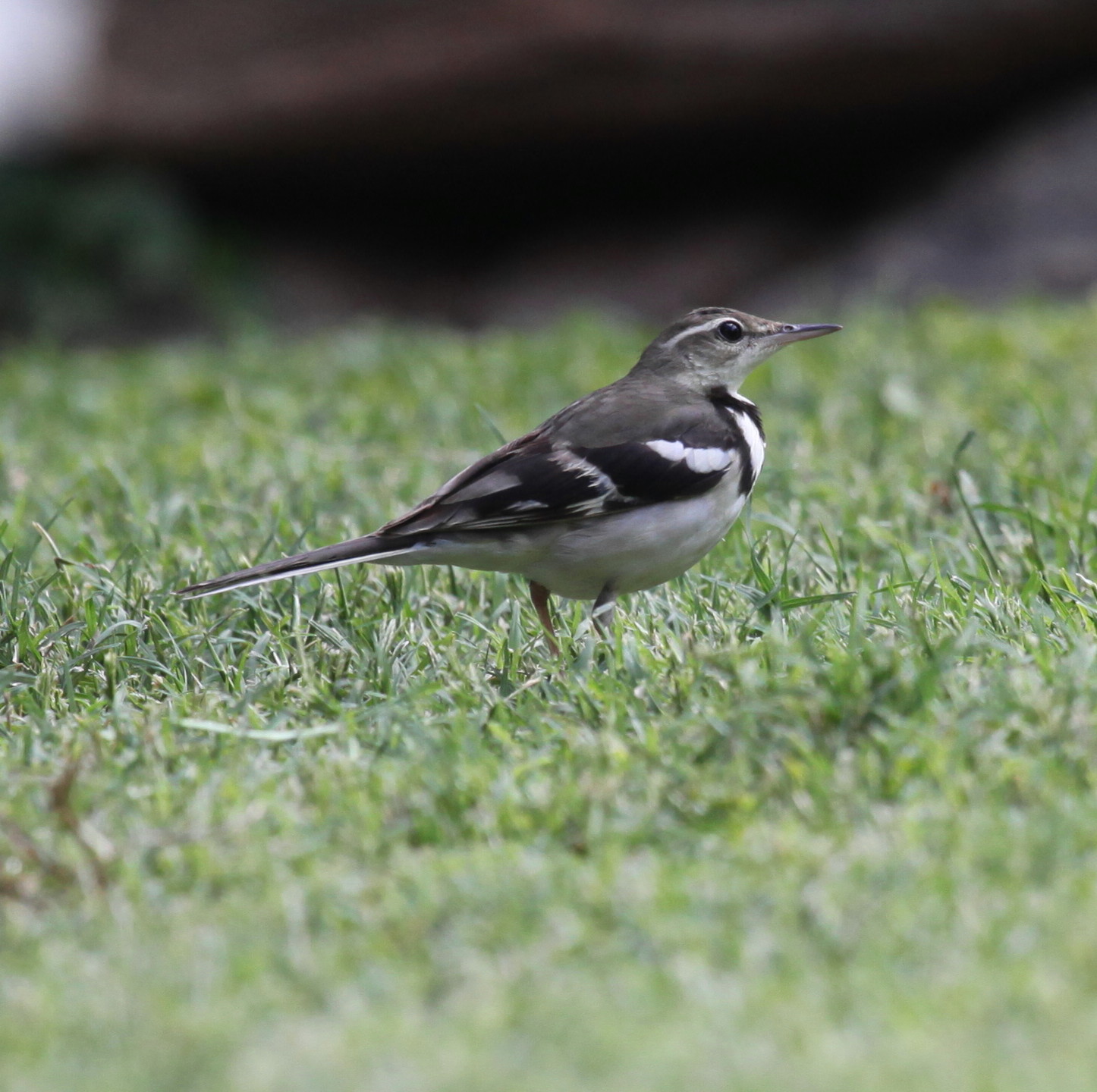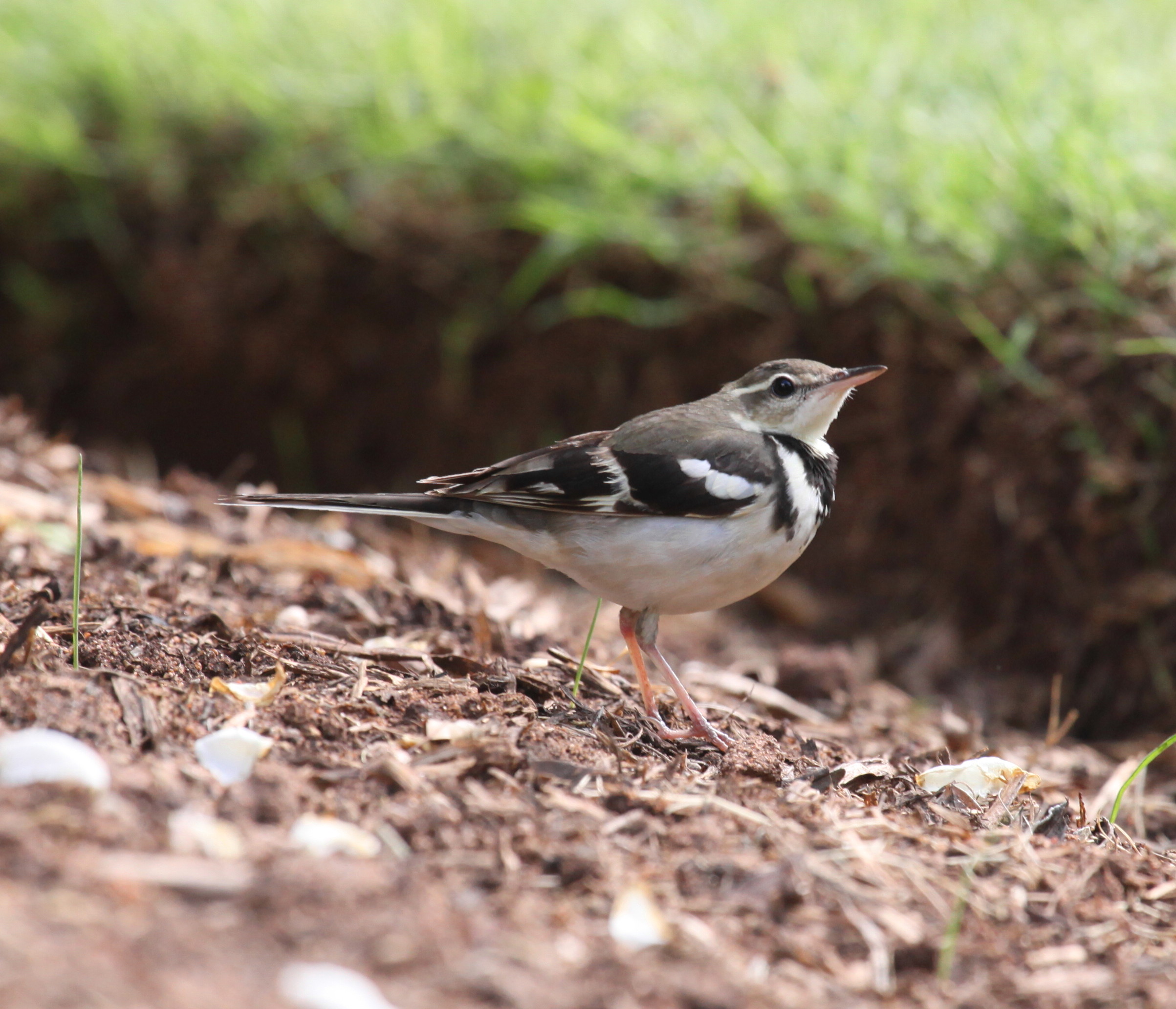Forest Wagtail - BARC Submission for an Australian Mainland First
This post is a result of a few requests that I've had about producing a rare or vagrant bird report for submission to the BirdLife Australia Rarities Committee (BARC).
In fact, I've only had cause to make a single submission to BARC and that was in the fairly celebrated case of the Forest Wagtail that was present in Alice Springs during 2013. There have probably been few, if any, other BARC submissions that have been so straightforward. Leaving aside for a moment that many of the members of the committee had actually travelled to Alice Springs to see the bird themselves, it was a long staying bird which was very site-faithful and was an outstanding photographic subject. After a few months of being viewed by dozens of birders, with who-knows-how-many-thousands of photographs taken, there was no doubt as to its identity and this submission was really just a formality to get the observation on the official record.
As such, this report is perhaps less detailed than one that you might produce for a bird which is less straightforward to ID (a Lesser Black-backed Gull say), but if you ever have occasion to write such a report, you might find that the research, and the process of consulting with experts is part of the enjoyment of the exercise.
The BARC website has all of the resources and instructions that you might need to guide you through the process and I've always found the members of the committee to be approachable. If you are fortunate enough to find a vagrant species, or a rarity listed on the BARC review list, I'd urge you to take the time to produce a report, however brief, to ensure that our national list is as accurate and up to date as it can be.
So for the interest of those who have requested it, below is the original submission in its entirety. I've copied it over with just a few minor formatting changes but otherwise intact. The original photographs that were included with the report can be found at the bottom of the text.
Forest Wagtail Dendronanthus indicus at Alice Springs, Northern Territory, April - September 2013
Submission to BirdLife Australia Rarities Committee, 16 February 2014
CHRISTOPHER WATSON(1), WILLIAM CORMACK(2) & ANNE CORMACK
Preface
A Forest Wagtail Dendronanthus indicus, was identified at a private residence on Cromwell Drive, Alice Springs, Northern Territory on 4 May 2013. The bird was reported to have been present (noted as unusual but otherwise unidentified) since 29 April 2013, but had not been noticed before this date. It was present in the area, and observed at this site by at least 52 visiting birdwatchers from all states of Australia (Will Cormack pers. comm.), and was last seen on 1 September 2013. This is an account of the occurrence, which is believed to be the first record of the species for mainland Australia, following a single photographed record from Christmas Island, 17 May 2009.
Habitat
Well-watered private garden with thick lawn at the rear of the house and terraced garden sloping up sharply to the rear of the property with a variety of flowering bushes and a large Date Palm Phoenix dactylifera, shading the eastern side of the garden. The neighbouring properties on either side had less well-watered and vegetated gardens with extensive paved areas. The back of the property is joined with crown land consisting of low acacia scrub containing buffel grass Cenchrus ciliaris, Witchetty Bush Acacia kempeana, and a variety of native grasses (Aristida spp.) on a rocky knoll. North-east of the crown land, roughly 100m from where the bird was observed, is the seventh fairway of the Alice Springs Golf Club providing extensive areas of open, well-watered grass. 300m to the south-west of the property, is the tenth fairway of the course, which has a 250m long water trap. 500m to the south-west is the golf club’s main water feature, an artificial lake approximately 120m at its widest, which is frequented by numerous cormorants, herons, coots, ducks, and other waterbirds.
Sighting conditions
The day that the bird was first positively identified was a fine, still morning, with clear skies and approximately 27°C. The sun was getting high, providing fairly good viewing from all directions. As the bird continued to be observed in following months, it was viewed during a range of climatic conditions, typical of central Australia for the time of year. Temperatures ranged from overnight lows of 2.6°C to daily maximums as high as 35.1°C. Approximately 15mm of rain fell during 12 and 13 May, with a further 47.2mm falling by the time of the final record of the bird.
Optical aids used
8 x 42 binoculars and a Canon 5DII camera with a 100-400mm f5.6 lens.
Additional Observers
Will Cormack and Anne Cormack, the residents at the property who first noted the bird’s presence, were both present at the time of identification and had seen the bird the previous day as well. They both agreed with the identification of the bird. Before the possibility of Forest Wagtail was presented, they had already rejected the possibility of any of the vagrant species of wagtail (Motacilla sp.) known to have already occurred on mainland Australia and depicted in the Pizzey & Knight field guide, based on lengthy clear views of the bird on this date and the previous day. All three observers are 100% confident of the identity of this bird.
Will and Anne Cormack can be contacted on their home phone: XX XXXX XXXX
Physical Description of Bird
1) A single live bird was present.
2) None of the observers have sufficient experience with the species to accurately estimate age and sex, but in comparison to field guide images it appeared to be a sub-adult bird, due to a less pronounced second white bar on each wing. No sexual dimorphism is suggested or depicted in the available field guides (Robson 2002, Robson 2005, Svensson et al 2009).
3) In both size and general shape the bird appeared to be broadly similar to wagtails of the genus Motacilla that WC and CW have observed on numerous occasions in Alice Springs, Zimbabwe, The Netherlands, and the United Kingdom.
4) We were unable to determine any details of moult due largely to a paucity of reference material. The crown of the head was a dull grey-brown which continued down across the scapulars and on to the upper back. The upper portion of the folded wings had some of the same grey-brown colouration of the upper back, but the remainder of the wing was a dark black colour with strongly contrasting white markings visible at two points while the wing was folded. The upper tail appeared to be a similar grey-brown but the underside of the tail was pale – almost pure white.
The belly and sides were a similar clean white. The breast was also a clean white colour but with two strongly contrasting black bands – the lower of the two incomplete (coming part way across the breast but not meeting in the middle.) Above the upper black breast band, the throat was a clean white. There was a clear, broad supercilium that joined the upper portion of the bill and extended back well past the eye. There was a strong grey-brown line passing through the middle of the eye and the ear coverts were a very slightly buff, off-white colour.
5) The upper mandible was dark grey and the lower mandible was a pale, perhaps slightly fleshy colour. The iris appeared to be a very dark brown colour. The legs and feet were a very pale fleshy pink.
6) The bird was not heard to call at all during the initial observations. It was later heard to call very occasionally by WC and other observers and was described as sounding vaguely similar in character to the call of Mistletoebird Dicaeum hirundinaceum (Will Cormack and Rohan Clarke pers. comm.).
7) The bird was predominantly terrestrial in its habits but was twice seen to perch in the lower branches of acacia shrubs. The first time the bird flew up to perch approximately 100cm from ground level in the branches of a Witchetty Bush, where it stayed for approximately 2 minutes. The second time, it flew in to perch in the branches of a different bush of the same species about 30cm from the ground in the neighbouring yard, but still visible through a chain-mesh (cyclone) fence.
The remainder of the time the bird walked slowly around the garden except for one flight from the western to the eastern side of the garden (approximately 25m). Only the flush was seen of this flight as the flight path was obscured by terraced garden beds, but the bird was relocated in the opposite corner of the garden. The bird was not heard to call in flight.
When the bird was stationary it swayed its tail constantly from side to side in quite a gentle, but continuous, motion – not at all as vigorous as a Willie Wagtail Rhipidura leucophrys or a Grey Fantail R. albiscapa, with which all observers are familiar. It occasionally picked something from the ground, and it once picked at some low seeds hanging from a grass stalk, but it did not appear to eat anything and did not persist in these behaviours.
The only other birds detected in the garden during the period of the observations was a Mistletoebird, heard in a nearby tree but not seen, and 3 Australian Ringneck Barnardius zonarius, which flew through the garden calling at a height of some 10m above the ground level at the rear of the house. None of these birds appeared to disturb the subject.
Potentially Confusing Species
This bird could conceivably be confused with any of the Motacilla wagtail species were it not for the distinctive breast markings, strongly contrasting black and white wing markings, and the constant lateral tail motion.
If this bird was seen briefly or in flight, on shape and size alone it might be easy to confuse with any of the Motacilla wagtail species. However, having viewed this bird through binoculars at ranges as close as 7m, with the bird walking slowly on the ground and at times stationary, for approximately 50 minutes, we are confident that the characters described above can safely eliminate all of the Motacilla wagtail species.
Documentation
This description was written from memory while consulting the 407 photographs taken during the observation period. Three sequences of high-definition video footage were also taken with the same camera, totalling 1min 51secs of footage, which amply depicts the behaviour and tail motion of the subject. Five photographs have been attached to this submission, which we believe provide sufficient material for a positive identification, but further photographs and video footage can be provided on request.
A brief clip of HD video footage of the bird can be viewed here.





Acknowledgements
Mark Carter, Tim Bawden, and David Stowe each assisted with identification of early images of the bird posted to social media. Mike Carter and Samantha Hopley provided helpful comments on a draft of this submission.
References
Pizzey, G., & Knight, F. (2012). The Field Guide To The Birds Of Australia. Sydney: Harper Collins.
Robson, C. (2002). Birds Of Thailand. London: Princeton University Press.
Robson, C. (2005). Birds of Southeast Asia. New Jersey: Princeton University Press.
Svensson, L., Mullarney, K., & Zetterstrom, D. (2009). Collins Bird Guide: The Most Complete Guide To The Birds Of Britain And Europe. London: Harper Collins.
